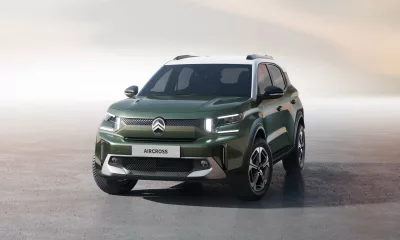If you’ve read our previous article about grey motorcycle imports and have decided to acquire one of your own, CARtoday.com provides you with some handy tips before you part with your hard-earned cash.
by Darren Ravens
If you’ve read our previous article about grey imports and have decided to acquire one of your own, CARtoday.com provides you with some handy tips before you part with your hard-earned cash.
If you have a limited budget or are yearning for something that’s fun with reasonable performance that is also light and handles well, then a grey import is probably the way to go. But before parting with your cash, work out what kind of budget you will have available to you. If you are new to biking, remember to factor in things like a good helmet and other protective gear. Also keep some money aside for inevitable unforeseen costs.
Next you need to decide whether you will be buying from bike dealers or private sellers as both routes offer good and bad points. All things being equal, you can expect a dealer to charge a few grand more than a private seller for the same bike. A reputable dealer can offer more peace of mind and after sales service that you wouldn’t get from a private seller but beware, as not all dealers are above-board. It’s also usually a good idea to check out bikes from dealers and private sellers to get an idea of what is available.
We’ve made a few assumptions about what we think you’ll need. No commuters, scooters or dinosaurs (bikes from the 80’s, so called because of their age and bulk) for us, we’ll be shopping for race reps. 400cc four strokes from a private seller. And while we’ll be focusing on the main Japanese manufacturers’ offerings, bear in mind that there are one or two Europeans machines that might fit the bill too.
Before you start shopping
If you are new to biking, try to get your learner’s licence before you look at bikes. That way, if a buyer is willing to give you a test ride, you’ll be legal to do so.
Get a friend who knows a bit about bikes to go with you. They may be able to spot things you don’t and will have a better idea about whether a bike is in good condition or not. If you are new to biking, maybe they can test ride it for you. Even if they know nothing about bikes it is useful to have someone that can give you a second opinion about a bike or to temper your enthusiasm a bit.
Have the money readily available. Don’t take it with you when you first view the bike but be able to get it at short notice. This is a huge bargaining tool and prevents time-wasting.
Take along a:
Pen and notepad – To make a list of the little things you’ve noticed that may add or detract from the value of the bike. This is useful for making your final decision or choosing between various bikes you may have looked at. Use it too to make a note of the owner’s details and vehicle’s registration and identification numbers.
Torch – For closer inspection behind the fairing and under the bike.
Camera – Take a few snaps of each bike, again to help when finalising your decision.
Tips to remember
Be patient – There’s no need to be in a hurry to part with your cash. Shop around for as long as it takes to find the right bike. Look at a minimum of five bikes before you decide since the more bikes you look at the better your chance of finding a good deal.
Timing is also important. Most bargains are to be found during the winter months and prices rise markedly with the onset of spring.
Try to negotiate – Any price is negotiable but be reasonable. Sometimes it’s worth trying your luck but don’t push it. If you insult a seller you may lose out on a good bike.
Don’t let the seller pressure you into buying – A common tactic is to claim another buyer wants it so it will be sold if you don’t take it.
Ask questions – Don’t be shy to quiz the seller about all aspects of the bikes history.
Questions to ask
Tell-tale signs are deep parallel scratches on the frame or engine casing, mismatched footpegs or brake and clutch levers and aftermarket or fibreglass fairing panels. Be sure to check bar-ends and mirrors for damage too. In the second-hand market many bikes will have crashed or fallen at some stage and though this does not necessarily mean that the bike should be avoided, it does warrant closer inspection in case of more serious damage. Look closely at welded seams in case of cracks and check frame and rear sub-frame alignment.
A raced bike is more likely to have been crashed so look for the same signs as above. Ex-race bikes are more likely to have worn or damaged engines since they are constantly hammered. Racing tires are another sign but often these are fitted to road bikes by sellers trying to cut costs. Look for sump plugs that have been drilled and safety-wired for quick release. Wheels are usually heavily scratched and scuffed due to the frequent tyre changes on race bikes. Sawn-off or aftermarket footpegs are also common to improve lean angles.
This can often give a vital clue. Hesitancy from the seller could indicate a problematic bike. The seller might also be in the business of buying damaged bikes and repairing them to sell at a profit.
Clocks can be turned back or replaced. Does the indicated mileage match the the looks?
Check the basics
Start the engine and let it idle. Does it struggle to start? Does it run smoothly? Let it warm up for a few minutes and then give it a rev. Does it rev smoothly? Does it smoke? Black smoke indicates a rich fuel mixture and blue-tinged white smoke means it is burning oil.
Check all the electrics. Give it a rev with the lights on. Does the headlight go slightly brighter? If not the battery may not be charging properly.
Sit on the bike. Does it feel “right”? Look for anything obviously bent or out of place. Now bounce up and down. Apply the brakes and rock the bike backwards and forwards. Does the suspension feel overly soft or hard?
Check brake lines, rear shock and fork seals for fluid leaks.
Check the condition of the tyres.
Check brake discs for uneven wear and scoring.
Check the sprocket and chain for corrosion and wear.
Before handing over the cash
Use the VIN (vehicle identification number) and registration details to run a check on the bike at your local vehicle registration department. They will be able to tell you if the seller is the registered owner, if there are any outstanding licensing fees and if the bike is registered as a rebuild. If everything doesn’t check out be very careful as it may be stolen or a rebuilt wreck.
Make sure you get the original registration papers from the seller and insist on a receipt.
General issues with grey imports
Wheels and tyres
If the bike has been recently imported it may still have the original Japanese spec tyres. These are most likely hardened or perished by age and will need replacing. If they need to be replaced remember to factor this into the price. Beware of race tyres.
They might not mean that the bike was raced but they are not really suited to road use. Race tyres on a road bike will not warm up to optimum temperature so they will be prone to “cold-tearing” which is evident by bits of loose rubber near the edge of the contact surface. Many sellers might put ex-race tyres onto a bike which is about to be sold since they can be picked up fairly cheaply.
The alloy rims found on these race replicas are fairly soft so look carefully for dents or dings. Minor scratches are fairly common but beware of major damage that will require repair or replacement of the wheel.
Speed or power restrictions
Most grey imports will be restricted to a top speed of around 180km/h, which is more than fast enough to exceed the road speed-limit by a fair amount. Most restrictions are electrical but some are mechanical. Speak to your local grey importer about de-restrictor kits and products for your particular bike. Most of the 400s will run to about 210-225km/h de-restricted.
Suspension
Bikes made for the Japanese market usually have suspension designed for the lighter average build of the Japanese rider. This means that grey imports often suffer from tired or undersprung and underdamped suspension. Often, just turning the available adjustment to the maximum will be a vast improvement but occasionally an upgrade is needed.
Common Models
Spares for grey imports are always an issue so be sure to stick to the more common models if you want be sure you can get spares when you need them. This also means bike mechanics will know more about your bike and if you are a DIY-type person, you are more likely to find a workshop manual.









